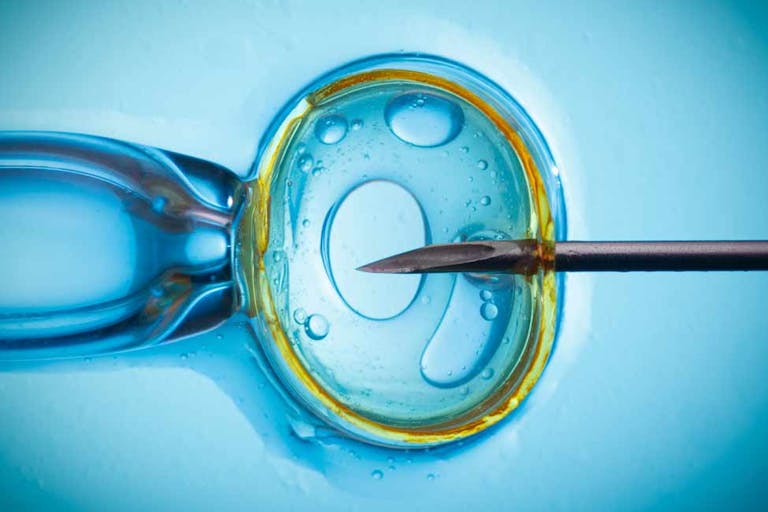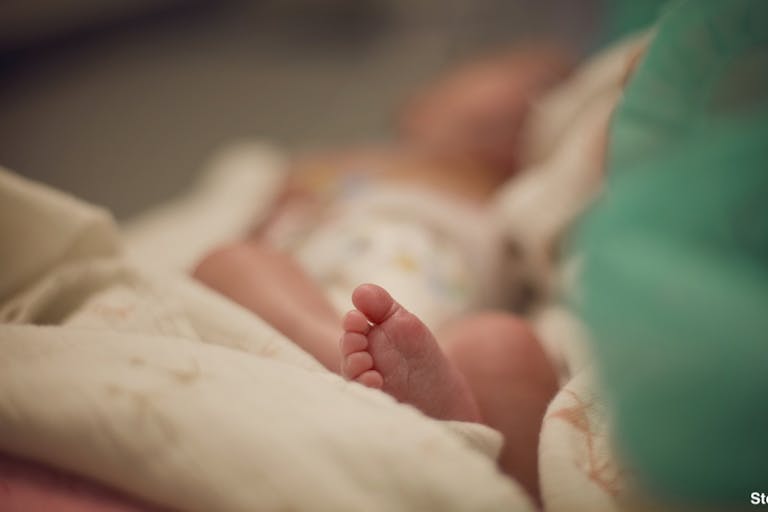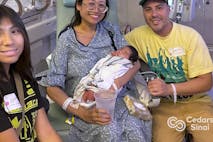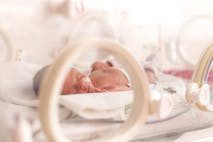
Abu Dhabi expands fertility industry to become 'IVF capital of the world'
Angeline Tan
·
Human Interest·By Nancy Flanders
Dominic is alive and well today after doctors told his mom she needed an abortion
In 2016, Tara Vigarino’s water broke at just 17 weeks. Terrified, Vigarino was told that her baby had no chance of survival due to such an early gestational age. “I was a basket of emotions,” Vigarino told SELF magazine. “It was not at all what I was expecting to hear.”
Doctors at Vigarino’s hospital encouraged her to either have an abortion or to go home and wait for a miscarriage to happen. However, her OB/GYN offered her help and hope and told her to stay in bed and drink fluids to try to increase what amniotic fluid she did have.
Once a week she would visit her OB/GYN to check on the baby. She also began to see a doctor at the Cleveland Clinic who specialized in high-risk pregnancies. That doctor told her that if she could make it to 23 weeks, then they could do more to help the baby should labor begin. By following her doctor’s advice, Vigarino made it to 31 weeks. Doctors then determined it was safer to deliver her baby than continue the pregnancy.
READ: Doctors use innovative surgery to successfully remove tumor from preborn baby’s lung
Baby Dominic was born two months prematurely and did “amazingly well,” Vigarino said. Women’s health expert Jennifer Wider, M.D., told SELF that PPROM (preterm premature rupture of the membranes) occurs in less than three percent of all pregnancies. It is rare, but serious. The baby is at risk of being born too soon and his or her mother is at risk of infection. In the case of infection, antibiotics can be administered. If they fail to resolve the infection, then early delivery may be necessary.
It is important to note that early delivery while attempting to protect both mother and infant lives is not abortion. While the abortion industry uses frightening stories like this to advocate for late-term abortion, the truth is abortion is never necessary to save a woman’s life.
Article continues below
Dear Reader,
In 2026, Live Action is heading straight where the battle is fiercest: college campuses.
We have a bold initiative to establish 100 Live Action campus chapters within the next year, and your partnership will make it a success!
Your support today will help train and equip young leaders, bring Live Action’s educational content into academic environments, host on-campus events and debates, and empower students to challenge the pro-abortion status quo with truth and compassion.
Invest in pro-life grassroots outreach and cultural formation with your DOUBLED year-end gift!

Dr. Donna Harrison of the American Association of Pro-Life Obstetricians and Gynecologists confirms this. In a statement to Live Action News in 2019, she wrote, “There is a very big difference between previable separations and elective abortion. In these situations where a mother and her fetus must be separated in order to save the life of the mother we would try to optimize the conditions of the separation so that the fetus has the best possibility to live. But there are cases when the baby will not survive the separation due to gestational age. We call these previable separations. These separations are done with the intent to save both if possible, but at least to save the life of one. Previable separations are not the same as elective abortions.”
Harrison also noted that during hearings over the Partial Birth Abortion Ban, the U.S. Supreme Court made it clear that “the intent of a delivery is to produce, if possible, both a live baby and a live mom. The intent of an abortion is to produce a dead baby.”
Thankfully, Vigarino’s doctor was willing to fight for the health and lives of both mother and son. Vigarino hopes her story can help other women to have hope. “I just want to tell women that, if they’re ever in the same situation, there is hope,” she said. “You could go on to have a healthy baby.”
“Like” Live Action News on Facebook for more pro-life news and commentary!
Live Action News is pro-life news and commentary from a pro-life perspective.
Contact editor@liveaction.org for questions, corrections, or if you are seeking permission to reprint any Live Action News content.
Guest Articles: To submit a guest article to Live Action News, email editor@liveaction.org with an attached Word document of 800-1000 words. Please also attach any photos relevant to your submission if applicable. If your submission is accepted for publication, you will be notified within three weeks. Guest articles are not compensated (see our Open License Agreement). Thank you for your interest in Live Action News!

Angeline Tan
·
Politics
Nancy Flanders
·
Human Interest
Angeline Tan
·
Human Interest
Bridget Sielicki
·
Human Interest
Nancy Flanders
·
Human Interest
Nancy Flanders
·
Politics
Nancy Flanders
·
Activism
Nancy Flanders
·
Issues
Nancy Flanders
·
Human Interest
Nancy Flanders
·
Investigative
Nancy Flanders
·